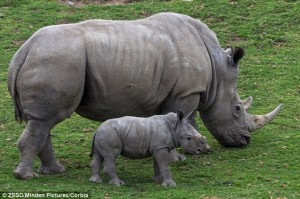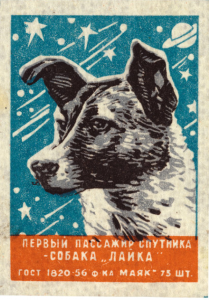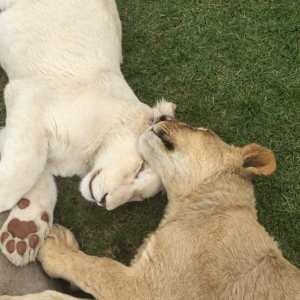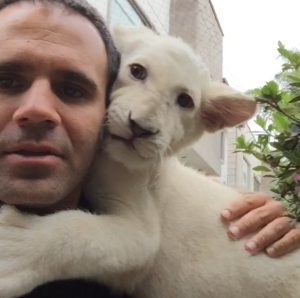The video I chose comes from youtube and is called, “Pig rescues baby goat”. In the video a drowning goat is pushed onto shore by a pig that swims into the water to help. The cameraman’s narration can be heard at the beginning of the video when he frantically yells, “Goat in the water” and then at the end once the goat has been saved he says, “And there he is, the hero pig”. According to the video description the larger context is that the baby goat fell into a pond at a petting zoo and got its foot stuck underwater, which explains how it became trapped. The video is also filmed in a continuous wide shot, with the goat in the center of the frame and the pig appearing in the bottom left hand corner.
When I first saw this video I was captivated by it because, like the zoo spectators in Randy Malamud’s essay “Zoo Spectatorship”, I fell victim to the voyeuristic mindset and found myself interested in the video because of the element of danger that was involved. The internet is filled with video similar to “Pig rescues baby goat” in which a cute animal in peril is saved and many of them rack up millions of views because they allow the viewer gets a thrill from seeing a cute animal experiencing a dangerous situation. Malamud sums up this one-sided voyeuristic experience with the quote, “The voyeur seeks a spectacle, the revelation of the object of his interest, that something or someone should be open to his inspection and contemplation; but no reciprocal revelation or openness is conceded” (Malamud 230). Malamud’s definition of Voyeurism explains why videos like “Pig rescues baby goat” are so popular: they allow the viewer to see something not often experienced in their day-to-day lives and because of this the viewer gains an incredible amount of satisfaction by living vicariously through the spectacle that they are watching, which in this case is a potentially perilous scenario in which a goat avoids death by being helped by a fellow animal. Much like the zoo spectator the viewer of “Pig rescued by goat” is aware that the act of spectating is invasive, but the viewer continues to do so anyway because they get a thrill from seeing this rare side of the animal kingdom, the only problem is that the experience that they are presented with is entirely fabricate. The video “Pig rescues goat” was created by comedian Nathan Fielder as a social experiment to see if he could create a viral video by using a perilous scenario involving two adorable animals, and the result was a success: the video went viral within days. The comedian used apathy, voyeurism, and cute animals to entice the viewer and was so incredibly successful at doing so that the video received 9 million views. When paired with the Malamud reading it becomes clear that this hoax is no different than the entire experience of zoo spectator ship because both scenarios highlight the sociopathic tendencies that we as voyeurs have developed over time. According to Malamud zoos, “foster sociopathy” by giving people the opportunity to get pleasure from feeding animals and watching them mate and defecate. By this logic videos like “Pig rescues baby goat” also feed our sociopathic appetite because they present us with fabricated perilous situations that we ultimately derive satisfaction from because we get to experience a spectacle that is cute or rare. The hoax video is clearly manipulating the viewer’s empathy and love for cute animals, but in doing so it is able to reveal that we as human beings are incredibly voyeuristic and have a deep-rooted fascination with spectating.
Malamud, Randy. Zoo Spectatorship. New York: New York University Press, 1998. Print.




Recent Comments